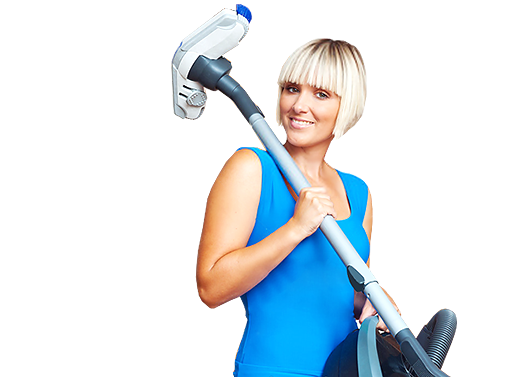Will steam cleaning damage your leather sofa
Posted on 22/05/2025
Will Steam Cleaning Damage Your Leather Sofa?
Keeping your leather sofa pristine is a priority for any homeowner who values comfort, style, and longevity. When it comes to deep cleaning, many people wonder: Will steam cleaning damage your leather sofa? It's a vital question, as using the wrong method could lead to costly repairs or even irreversible harm.

Understanding Leather Sofas and Their Cleaning Needs
Leather sofas are an investment and often the centerpiece of a living room. Leather is a natural material, known for its strength, flexibility, and luxurious appeal. However, leather also requires a specific care routine to maintain its appearance and durability.
- Natural Porosity: Leather is porous, which means it can absorb liquids and moisture.
- Susceptibility to Temperature: High heat can cause leather to crack or warp.
- Vulnerability to Chemicals: Certain cleaning agents may strip the leather of its natural oils.
If your priority is preserving the natural luster and resilience of your sofa, it's essential to use cleaning techniques tailored for leather's unique properties.
Popular Methods for Cleaning Leather Sofas
Before focusing on steam cleaning specifically, let's take a quick look at some standard ways to care for leather couches:
- Dusting and Vacuuming: Regular removal of dust and debris helps prevent surface scratches from dirt particles.
- Spot Cleaning: Gently blotting with a damp (not wet) cloth and immediately drying the area helps address minor spills.
- Using Leather Cleaners: Specially formulated leather cleaning products work to lift dirt while replenishing natural oils.
- Conditioning: Regular application of leather conditioner helps maintain suppleness and prevent cracks.
What is Steam Cleaning?
Steam cleaning uses high-temperature vapor and pressure to remove dirt, grime, and bacteria from surfaces. While it's extremely effective at sanitizing many materials, suitability depends on what you're cleaning. Steam cleaners eject pressurized steam, which can penetrate deep into fabrics and pores -- but is that a good thing for leather?
How Does Steam Cleaning Work?
Steam cleaners boil water to produce vapor, which is then released in controlled bursts onto a surface. The process uses heat and moisture rather than harsh chemicals. It's often praised for:
- Eliminating bacteria and germs
- Removing stubborn stains
- Reducing allergens
- Being eco-friendly due to minimal chemical usage
For many upholstery types and hard surfaces, steam cleaning is a safe option -- but leather is different.
Is Steam Cleaning Safe for Leather Sofas?
This is a hotly debated question. To answer accurately, we must consider the anatomy of leather and the effects of steam:
What Happens When Leather Is Exposed to Steam?
- Heat: High temperatures can cause leather fibers to shrink, harden, and crack.
- Moisture: Excessive moisture can penetrate the pores, leading to mold, mildew, and eventual disintegration.
- Natural Oils: Steam can strip leather of its vital oils, making it dry and brittle.
Most leather care professionals strongly advise against steam cleaning leather sofas. Although some commercial steamer manufacturers claim their devices are suitable for leather, it's typically only recommended for sealed, synthetic, or treated leathers -- and even then, it's with great caution.
Potential Risks of Steam Cleaning Your Leather Sofa
Let's dive deeper into the specific risks of steam cleaning a leather sofa:
1. Loss of Natural Oils and Flexibility
Leather's longevity relies on maintaining its natural oils. Steam cleaning can cause those oils to evaporate, leaving the leather dry and inflexible. Over time, this can result in cracks, splits, and a dull, aged look.
2. Structural Damage
Heat from steam can disrupt the collagen fibers in leather, resulting in a loss of structural integrity. This weakens the sofa and accelerates wear and tear.
3. Discoloration and Fading
Exposing leather to high-temperature steam can discolor or fade its surface. Specially dyed or finished leathers are especially at risk.
4. Water Marks and Stains
Water can get trapped within the leather structure, creating unsightly water marks or stains. In humid environments, moisture can also encourage the growth of mold or mildew inside the sofa cushions.
5. Peeling and Flaking
Excessive moisture and temperature fluctuations can cause top finishes (like polyurethane or acrylic coatings) to peel or flake, compromising both aesthetics and protective qualities.
Are There Any Exceptions?
Some modern leather sofas use synthetic or faux leather, or have been specially treated to withstand higher moisture levels. In those rare cases, some steam cleaning devices may be safe to use at the lowest setting, provided you follow strict guidelines and test on an inconspicuous area first.
However, with genuine leather sofas -- especially those made from high-quality, aniline, or semi-aniline hides -- most manufacturers void the warranty if steam cleaning is attempted. Always check your care instructions and warranty terms!
Professional Opinions: What Experts Say
Most professional leather cleaners and upholstery experts discourage steam cleaning for leather sofas. According to the National Leather Repair Association (NLRA):
"Steam may be effective for some synthetic upholstery and hard surfaces, but natural leather should never be exposed to high-heat or high-moisture cleaning techniques. Doing so may result in permanent damage."
Leather furniture retailers and brands like La-Z-Boy and Natuzzi also warn customers to avoid steam cleaning and instead recommend gentle, product-specific cleaning routines.
Alternatives to Steam Cleaning Your Leather Sofa
Instead of exposing your beloved couch to the hazards of steam, try these safe alternatives:
1. Routine Dusting & Vacuuming
- Use a soft, dry microfiber cloth or the brush attachment on your vacuum to remove surface dust and debris weekly.
2. Damp Cloth Cleaning
- Dampen a clean, lint-free cloth with distilled water (not tap water, to avoid mineral residue), gently wipe down the surface, and immediately dry with another soft cloth.
3. Specialized Leather Cleaners
- Look for pH-balanced leather cleaning solutions. Follow the instructions, always do a spot test, and never apply the product directly; instead, put it on a cloth first.
4. Leather Conditioners
- Replenish essential oils and keep leather supple by applying a high-quality leather conditioner every 3-6 months.
5. Professional Leather Cleaning Services
- If you're dealing with deep stains, mold, or restoration needs, certified leather cleaning professionals use specialized tools and products to do the job safely.
Tips to Keep Your Leather Sofa in Top Shape
- Avoid Direct Sunlight: Prolonged exposure causes fading and drying.
- Keep Away from Heat Sources: Don't place your sofa near radiators, fireplaces, or vents.
- Clean Spills Immediately: Blot, don't rub, to avoid spreading the liquid.
- Rotate Cushions: Helps maintain shape and even out wear.
- Minimize Contact with Sharp Objects: Prevent accidental scratches or tears.
Common Myths About Leather Sofa Cleaning
Myth 1: "Steam cleaning is the best way to sanitize any surface."
While steam is effective for many materials, leather is the exception due to its unique characteristics. Steaming leather does not guarantee sanitization and may cause long-term harm.
Myth 2: "You can use household cleaners or baby wipes on leather."
Most household products have chemicals or alcohol that strip natural oils, leading to premature aging. Always use cleaners designed specifically for leather care.
Myth 3: "Leather doesn't require conditioning."
Neglecting conditioning will result in cracked, brittle furniture. Just like skin, leather needs to remain moisturized and nourished with the right products.

Frequently Asked Questions About Steam Cleaning Leather Sofas
Q: Is there any type of steam cleaner that's safe for leather?
Most experts say no. Even low-moisture or gentle hand-held steamers carry the risk of heat and moisture damage. Always consult your sofa's manufacturer and never use steam unless explicitly recommended.
Q: How do I deep clean a leather sofa without steam?
Use a gentle leather cleanser, wipe down with a damp cloth, and finish by applying conditioner. For tough stains or ingrained dirt, call a professional leather technician.
Q: My leather sofa looks dull. Will steam cleaning help restore its shine?
No. In fact, steam can make it worse by removing essential oils. Instead, use a high-quality leather conditioner to bring back the natural sheen.
Q: There's a strong smell coming from my sofa. Should I steam clean it?
Odors may be due to spills, pet accidents, or mold. Instead of steaming, try a leather-safe deodorizer or consult a specialist for an in-depth, safe cleaning.
Conclusion: Should You Steam Clean Your Leather Sofa?
To sum up, steam cleaning is not recommended for genuine leather sofas. While steam is fantastic for other surfaces, leather's sensitivity to heat and moisture makes it particularly vulnerable. The best way to clean and care for your leather sofa is with regular dusting, spot cleaning, conditioning, and specialist products.
If your leather couch needs a deep clean or has stubborn stains, consulting a professional is always the safest route. This preserves the quality, comfort, and beauty of your investment for years to come.
Remember: proper leather sofa care avoids shortcuts like steam cleaning and focuses on gentle, effective techniques that maintain softness, color, and durability. Protect your home's centerpiece by choosing cleaning methods tailored for leather -- and steer clear of the steam!





